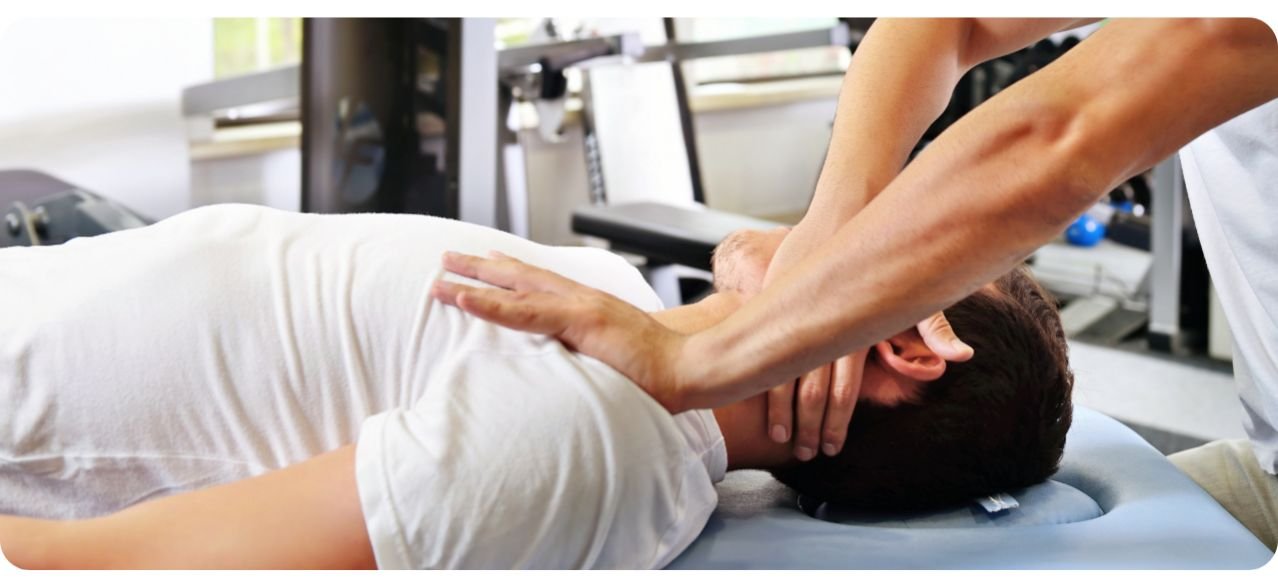Headaches
At Best Physiotherapy our physiotherapists are equipped with the skills to identify what type of headache you may have and how to treat it. We know that headaches can be debilitating and can be caused by a range of conditions. Importantly, if we do not think we are the right service to help you with your headaches we will tell you and signpost you to an appropriate one.
What causes headaches?
Headaches are often complicated with a range of factors having potential contribution to causing a headache.
The most typical headaches seen through physiotherapy are Cervicogenic headaches, followed by tension-type headaches and migraines. Headaches are often also multi-factorial in their cause. A range of factors such as tension in the neck and shoulder muscles, joint stiffness, poor posture, stress, dehydration, lack of sleep, and eyestrain can cause headaches.
We also recognise other medical conditions such as migraines and sinus infections may contribute and can screen to ensure we do not miss any serious underlying conditions.
Cervicogenic headache
These headaches are caused by referral from the cervical spine (neck) into the head. These are typically felt as a one-sided headache which is a steady ache or constant dull feeling. These headaches can often worsen with head movement.
Cervicogenic headaches are the result of injury or strain to the neck region. They are often missed or misdiagnosed due to the pain not always being in the neck region.
Cervicogenic type headaches usually have some common features. These include:
Reduced flexibility of the neck and pain with specific movements
Pain mostly affects the same side of the neck and head, but in uncommon cases both sides may be affected
Pain along the shoulder and arm on the same side
Pain originating at the back of the neck and radiating along the forehead, area around the eye, temple, and ear
Out physiotherapists can identify the causes of your cervicogenic headache and provide manual therapy, targeted exercises and identify and advise on aggravating lifestyle factors that may require modifying.
Migraine
Migraines are commonly felt as throbbing or pulsating on one side of the head. These are common in the general population and can be caused by a range of triggers including changes in the temperature, food, hormones and smells. Often those with a migraine may report symptoms of sensitivity to light or sound (known as aura). They can also commonly cause nausea and a general feeling of being unwell. These headaches are commonly considered to be caused by hypersensitive neurons in the brain. When a trigger occurs, the brain triggers other neurons, creating pain. More than ½ of those who experience migraine pain may experience neck pain before or after the attack.
Migraine headache Symptoms:
Generally, a migraine can progress through 4 stages. It should be noted though that not all stages are always present in everyone.
Prodrome: Before a migraine there may be warning signs: There are a variety of warning signs including, neck pain/stiffness, mood changes, changes to bodily functions (thirst, urination, yawning etc)
Aura: Not all migraines occur with aura, however those that do will report a range of factors such as flashes of light and a range of bright spots and shapes, various physiological changes including tingling in the limbs, altered movement (jerkiness), issues with communication, hearing various noises. Often with the onset of these types of symptoms it is likely that a migraine may occur in the minutes to hours following.
Migraine attack: During the migraine attack it is normal to experience a range of symptoms including: 1) neck pain, 2) sensitivity to light and sound, 3) nausea/vomiting, 4) lightheadedness, and 5) Severe throbbing pain on one or both sides of the head.
Post-drome: After the migraine attack you may often feel a variety of symptoms such as confusion, exhaustion and weakness which may persist for up to several days.
Often these migraine type headaches are known to last between 4 and 72 hours. Treatment is imperative to ensure that they are appropriately managed.
Treatment of migraines
Treatment of migraines can often be challenging. The aim of treatment is to reduce symptoms and avoid future headaches.
Commonly physiotherapy can employ a range of manual treatment techniques such as needling, massage, cognitive behaviour therapy and accurate identification of aggravating and easing factors to encourage self-management.
We are also happy to recommend other treatments in conjunction with your GP, these may include a variety of pain relief or preventative medications.
Tension type headaches
Tension headaches are often felt as a pressing between the temples or band-like feeling around the head. These are often felt as a constricting pain at the back of the forehead and in the temple area. There can also be muscular tension and stiffness in the neck. It is believed that a possible cause of tension headaches is a tightness caused by muscle contractions in the scalp, face and neck, which are often in response to strain, stress, fatigue and a range of lifestyle factors.
Treatment of tension headache
Addressing the underlying cause of tension type headaches is extremely important. Our physiotherapists are trained in identifying muscle tension and imbalances and can provide techniques such as manual therapy and specific exercise prescription to assist in the reduction of pain and symptoms. Other factors such as dietary changes, and pain relieving medication may also be of assistance.
Less common headache types can include Occipital Neuralgia, Hemicrania continua and Temporomandibular Joint Headaches.
During a session with Best Physiotherapy, you may have a range of interventional techniques including:
Exercise therapy: Our physiotherapists identify specific, evidence-based exercises based on your headache diagnosis.
Joint mobilisation: We may use hands-on techniques such as joint mobilisation or manipulation to help improve joint mobility and reduce pain.
Soft tissue mobilisation: We may use techniques such as massage or trigger point therapy to release tension in the neck and shoulder muscles.
Postural education: We provide education on proper posture and ergonomics to help reduce strain on the neck and shoulder muscles.
Dry needling (acupuncture): Our physiotherapists are trained to perform safe and effective dry needling to affected muscles.
Education on lifestyle modifications: Our physiotherapist can provide education on lifestyle modifications such as hydration, nutrition, and stress management.
What can I expect during my physiotherapy treatment?
During the initial appointment, our physiotherapists conduct a thorough assessment to identify the causes of your headache. Accurate diagnosis helps guide our physiotherapists to provide an intervention plan that is evidence based and helps you to achieve your desired outcome as soon as possible.
The benefits of seeing a Best Physiotherapy practitioner early may include:
Reduced pain: Physiotherapy can help reduce the frequency and severity of headaches.
Improved function: Physiotherapy can help improve neck and shoulder mobility, allowing you to perform daily activities more effectively.
Prevention of further injury: Physiotherapy can help prevent further injury by teaching proper body mechanics and posture.
No reliance on medication: Physiotherapy can help reduce headaches without the need for medication, which can have side effects and risks.
Headaches are complicated and debilitating. At Best Physiotherapy located at 72 Maribyrnong Street, Footscray, we have extensive training to ensure we can accurately assess and create an individualised management plan to treat, rehabilitate and prevent headache pain.





